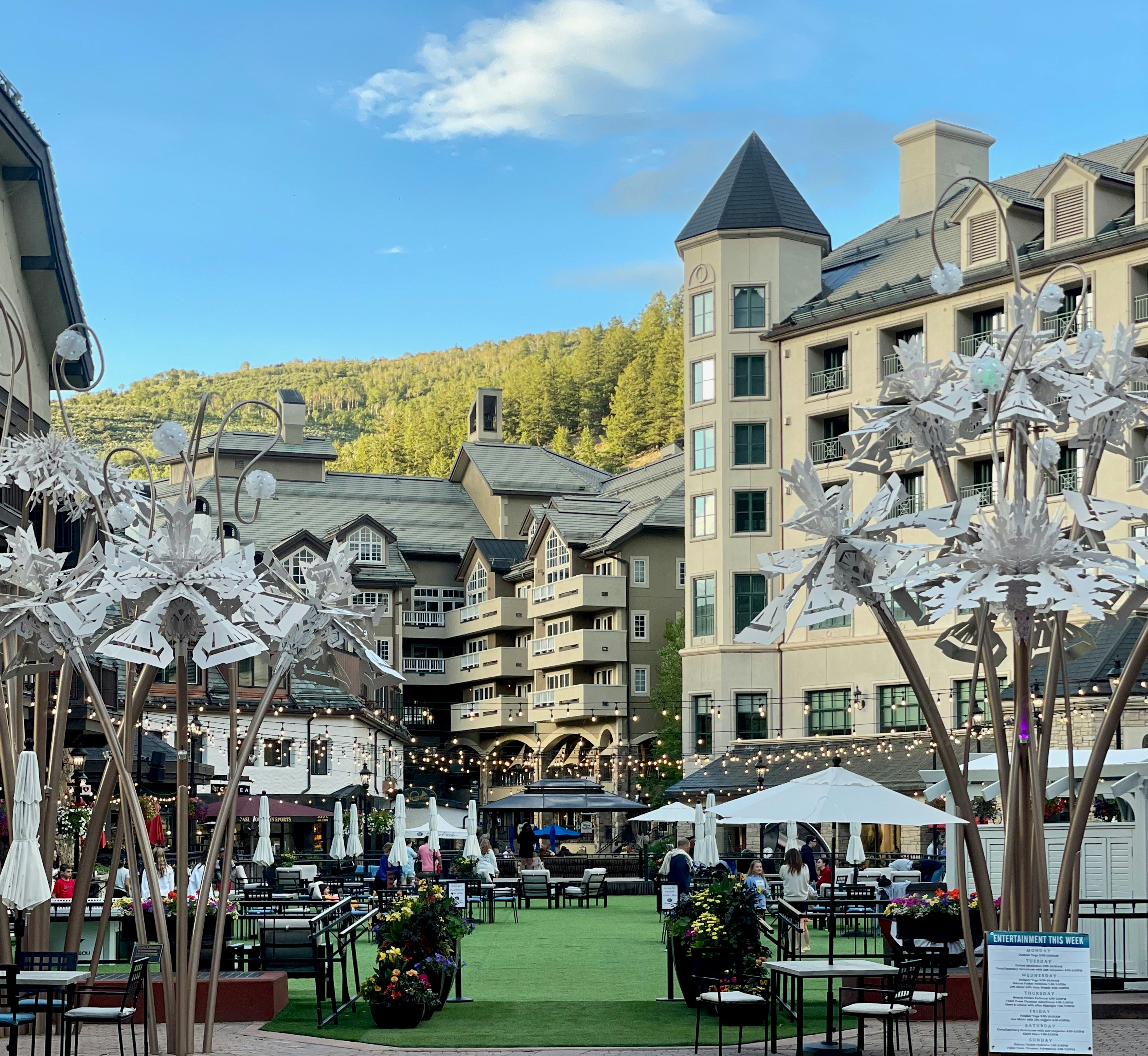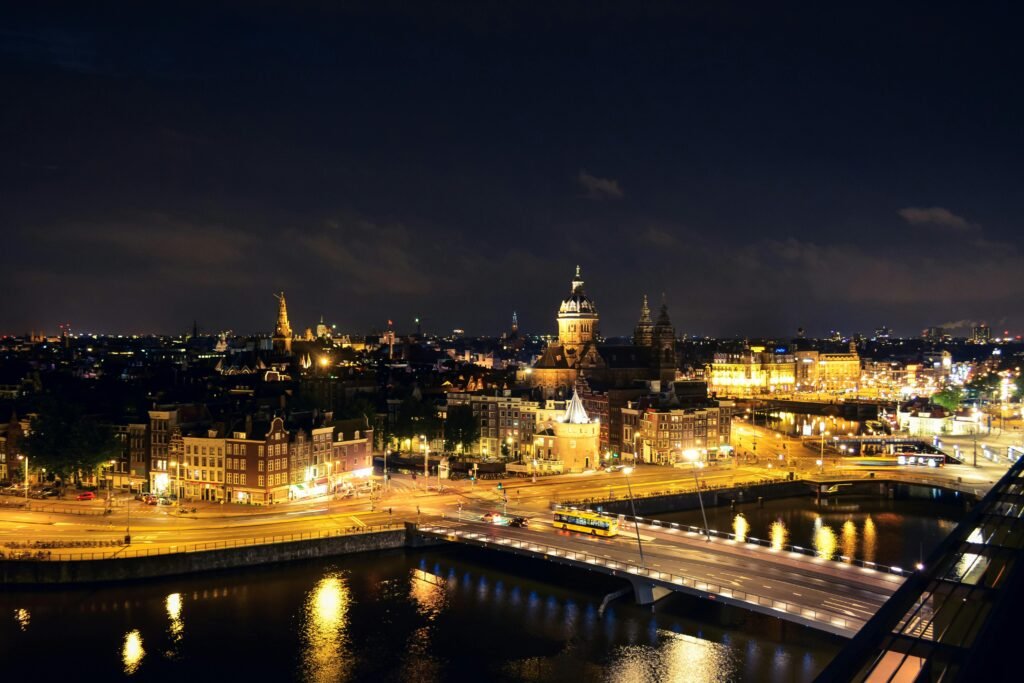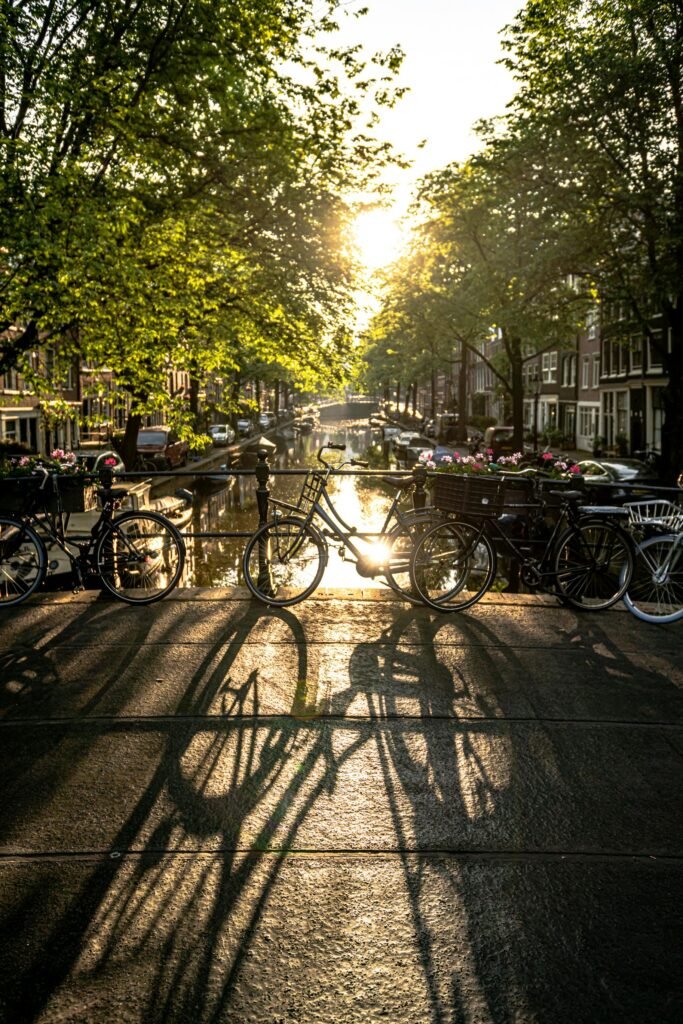Introduction to Amsterdam’s Hidden Gems
Amsterdam, renowned for its picturesque canals and iconic architecture, offers a treasure trove of hidden gems that extend well beyond the typical tourist path. While the city’s famous waterways captivate millions, those willing to venture off the beaten track will discover a tapestry of local charm, vibrant culture, and fascinating history tucked away in its lesser-known neighborhoods.

The allure of Amsterdam lies not only in its stunning landscapes but also in the rich narrative woven into its streets, parks, and plazas. Each district boasts a unique personality that reflects the city’s diverse inhabitants. For example, the trendy neighborhood of De Pijp hosts a lively market atmosphere and multicultural eateries, providing a refreshing contrast to the grand museums and historic sites often prioritized by visitors.
Moreover, Amsterdam’s history is punctuated by stories that transcend its well-documented past. From quirky museums that celebrate peculiar interests to serene parks that offer a respite from the hustle and bustle, the city is ripe for exploration. Local galleries, artisan shops, and intimate cafés allow visitors to immerse themselves in the rhythm of daily life, presenting an authentic snapshot of the city that remains elusive to those who linger only along the popular canal routes.
As travelers delve into the cultural heart of Amsterdam, they will encounter a wealth of unusual experiences and insights that enhance their understanding of this vibrant metropolis. By shedding light on these hidden gems, this post will guide readers toward a deeper appreciation of Amsterdam’s unique character and provide a roadmap for discovering the city in an entirely new light.
Quirky Museums to Explore
Amsterdam is renowned for its rich art scene and historic treasures, but beyond the famous Rijksmuseum and Van Gogh Museum lies a collection of quirky establishments that offer a distinct perspective on culture and history. One notable example is the Electric Ladyland, celebrated as the world’s only museum dedicated to fluorescent art. This unique venue invites visitors to immerse themselves in vibrant, glowing installations that challenge traditional notions of visual art. You can interact with an array of fluorescent materials and gain insight into the science behind luminescence, making it an ideal destination for enthusiasts eager to explore unconventional creative expressions.

Another captivating option is the Torture Museum, which delves into the darker side of human history. Situated in a historic building, the museum presents a chilling assortment of torture devices and methods used throughout the ages, providing a stark reminder of humanity’s capacity for cruelty. The exhibits are meticulously curated, with detailed explanations that provoke contemplation about justice, punishment, and societal norms. Visitors can expect an educational experience that blends historical narratives with thought-provoking visuals.
For those intrigued by the oddities of everyday life, the Amsterdam Cheese Museum offers a curious twist on conventional culinary experiences. While cheese is a beloved Dutch staple, this museum explores its history in an engaging manner, with interactive displays that tell the tale of cheese-making throughout the Netherlands. These experiences often include tastings, allowing visitors to appreciate not just the art but also the flavor of Dutch cheese. Such quirky museums showcase the diverse and unconventional side of Amsterdam, promising to enrich any itinerary with memorable experiences that diverge from typical tourist attractions.
Hidden Courtyards and Gardens
Amsterdam, renowned for its picturesque canals and vibrant streets, also conceals a collection of hidden courtyards and gardens that offer an unexpected haven of tranquility. These serene spaces allow visitors to step away from the city’s bustling atmosphere and immerse themselves in nature’s beauty, creating a delightful contrast to the urban landscape. One of the most notable examples is the Begijnhof, a tranquil courtyard dating back to the Middle Ages. This hidden gem is not only a historic site but also a peaceful retreat, complete with charming houses and lush greenery that invite visitors to linger and reflect.

Another intriguing location is the Rooie Draad, an initiative mapping out a unique walking route through lesser-known parts of the city. This initiative reveals a network of hidden squares and gardens, each with its own distinctive atmosphere and historical significance. As you wander through these often-overlooked spots, you’ll discover beautiful botanical gardens and quaint courtyards tucked behind old residential buildings, showcasing the city’s rich history and culture.
To fully enjoy these hidden spaces, it is advisable to bring along a guide or use a mobile application that highlights the locations of these charming courtyards. Many of them are situated in the heart of the city, making them easily accessible yet still discreet. Exploring these serene oases can provide not just a visual feast, but also a moment of respite for the mind and soul. As you traverse Amsterdam’s bustling thoroughfares, keep your eyes peeled for the unassuming entrances that promise to lead you to these peaceful enclaves. Ultimately, discovering these hidden courtyards and gardens can enrich your experience of Amsterdam, offering a unique perspective of the city’s soul beyond its renowned canals.
Unique Local Markets to Visit
Amsterdam is renowned for its enchanting canals and picturesque architecture, but the city’s character extends far beyond these iconic landmarks. A visit to Amsterdam offers a wealth of experiences, particularly through its unique local markets, which provide glimpses into the everyday lives of residents. Two markets, in particular, stand out for their distinctive offerings and local vibrancy: the Ten Katemarkt and the Noordermarkt.
The Ten Katemarkt is an exciting place to explore, infused with multicultural influences that reflect Amsterdam’s diverse population. Located in the heart of the city, this market is a treasure trove of culinary delights, ranging from fresh produce and unique spices to ethnic foods that represent numerous global cuisines. Vendors proudly display their goods, creating a feast for the senses. Visitors can sample everything from Dutch cheeses to international street foods, contributing to the lively atmosphere that thrives in this market. The sense of community is palpable, as locals gather to shop, chat, and enjoy the ambiance.
On the other hand, Noordermarkt offers a contrasting experience steeped in tradition. This weekly market, situated in the trendy Jordaan district, encompasses a range of organic and artisanal products. On Saturdays, it transforms into a bustling venue featuring organic vegetables, homemade pastries, and craft goods, attracting food enthusiasts and art lovers alike. The market’s special charm lies in its mix of vibrant stalls and the surrounding historic buildings. Additionally, visitors can delve into the flea market on Mondays, where antique treasures and vintage items await discovery.
By visiting these unique local markets, visitors to Amsterdam gain insight into the city’s culture and flair, experiencing not just a shopping trip, but a communal gathering that showcases the spirit of the residents. These markets are, indeed, essential stops for anyone wishing to immerse themselves in the essence of Amsterdam beyond its celebrated canals.
Uncommon Neighborhoods to Discover
While many visitors to Amsterdam flock to the historic canals and renowned attractions, the city is rich with lesser-known neighborhoods that offer a unique glimpse into local life. Two prominent areas that often go overlooked are De Pijp and Amsterdam-Noord. Each of these neighborhoods possesses its own distinctive character, inviting exploration and appreciation.
De Pijp, known for its bustling atmosphere, is a vibrant melting pot of cultures and cuisines. Originally developed in the late 19th century to accommodate the city’s working-class population, this area has transformed into a trendy hub. The famous Albert Cuyp Market is a must-visit, where visitors can savor traditional Dutch snacks and international dishes alike. Beyond the market, charming cafés and innovative restaurants dot the streets, showcasing the culinary diversity of the neighborhood. Street art adorns many walls, reflecting the artistic vibe that resonates throughout De Pijp.
Conversely, Amsterdam-Noord, just across the IJ River, offers a markedly different experience. This area has undergone significant redevelopment in recent years, transitioning from an industrial hub to a creative oasis. The striking Eye Filmmuseum, with its futuristic design, is a focal point of the neighborhood, offering both exhibitions and screenings. Additionally, Amsterdam-Noord is home to several independent galleries and studios, making it an ideal destination for art enthusiasts. Spaces like the NDSM Wharf play host to festivals and cultural events, further enriching the local cultural landscape. With its blend of modernity and history, Amsterdam-Noord provides a refreshing contrast to the more traditional areas of the city.
Exploring neighborhoods like De Pijp and Amsterdam-Noord allows tourists to experience Amsterdam in a new light, revealing the city’s dynamic spirit beyond the iconic canals. Each area, with its unique vibe, local eateries, and cultural significance, invites travelers to venture off the beaten path and embrace the diverse stories that lie within the city’s borders.
Local Events and Festivals
Amsterdam is renowned for its picturesque canals, but the city’s vibrant cultural life extends far beyond this iconic feature. Throughout the year, a variety of local events and festivals reflect the rich cultural diversity and artistic heritage of the city. One such event is the Dijkfest, which celebrates the cultural and artistic expressions of the communities living along the city’s dike areas. Usually held in late summer, Dijkfest showcases local artists, musicians, and performers, creating a vibrant atmosphere that captures the spirit and creativity of Amsterdam.
In addition to Dijkfest, Amsterdam hosts several neighborhood festivals that are equally distinctive and engaging. For instance, the Amsterdam Light Festival, occurring during the winter months, transforms the city into a brilliant display of light installations that illuminate the canals and bridges. Artists from around the globe contribute their creative visions to this festival, providing a unique opportunity to appreciate art in the context of the city’s natural beauty. Guided tours by boat or on foot allow visitors to explore these installations while experiencing the winter ambiance.
Another noteworthy celebration is the Amsterdam Gay Pride, particularly famous for its vibrant canal parade. Typically held in the first week of August, this festival emphasizes the importance of inclusivity and diversity. With colorful floats and thousands of participants, it attracts both locals and tourists who come together to celebrate LGBTQ+ rights and culture. Beyond the parade, numerous parties, performances, and discussions continue throughout the week, further enriching Amsterdam’s eclectic social fabric.
The array of local events and festivals in Amsterdam is a testament to the city’s diverse cultural landscape. Each celebration offers an opportunity to engage with the local community, create unforgettable memories, and explore the deeper layers of the city’s identity beyond the famous canals.
Dining Experiences Off the Typical Tourist Track
Amsterdam is renowned for its picturesque canals and classic eateries, yet the city also hosts a plethora of unique dining experiences that are often overlooked by tourists. For those eager to explore the culinary landscape beyond popular hotspots, there are several hidden gems that reflect the city’s multicultural tapestry and innovative cuisine.
One such establishment is Restaurant De Kas, a culinary destination situated in a former greenhouse. The restaurant emphasizes farm-to-table dining and offers a seasonal menu that highlights locally-sourced ingredients. Diners can enjoy dishes such as roasted vegetables from the restaurant’s own garden, paired with fresh fish or meat options that change according to the season. The unique ambiance, surrounded by greenery, makes this experience truly memorable.
Another intriguing option is Café de Ceuvel, located in a former shipyard in Amsterdam North. This eco-conscious café serves vegetarian and vegan dishes, crafted from fresh, organic ingredients. It’s a perfect spot for those looking for healthy dining alternatives while enjoying a view of the waterfront. Menu highlights include their signature Ceuvel Bowl — a delicious mix of grains, vegetables, and homemade sauces that truly embodies the spirit of sustainable cuisine.
For those interested in authentic Dutch flavors, exploring Van ’t Spijker might be worthwhile. This small, locally-owned restaurant specializes in traditional recipes that have been passed down through generations. Diners should not miss the opportunity to taste the “Hutspot,” a dish made from root vegetables and served with smoked sausage, which showcases the heartiness of Dutch cuisine.
Additionally, explore the vibrant flavors at Foodhallen, an indoor food market that features a diverse range of food stalls offering cuisines from around the world. Whether you prefer Asian delicacies or artisanal cheeses, there’s something for every palate here, presenting an excellent avenue to experience global culinary offerings in a communal setting.
In conclusion, dining in Amsterdam can extend far beyond classic options, providing visitors the opportunity to engage with local culture and cuisine by seeking out these unusual eateries. Each of these establishments offers a unique culinary journey that truly reflects the spirit of Amsterdam.
Art and Street Art Beyond the Van Gogh Museum
Amsterdam is renowned for its rich cultural heritage and artistic legacy, prominently showcased in its world-class museums. However, beyond the iconic Van Gogh Museum, the city boasts a vibrant street art scene and several lesser-known galleries that provide a different perspective on contemporary art. Exploring this facet of Amsterdam offers visitors the opportunity to engage with the local arts community in a more intimate manner.
The street art in Amsterdam is both dynamic and diverse, reflecting the city’s evolving cultural landscape. Areas such as the Spuistraat and the NDSM Wharf are hotbeds for street art, featuring an array of murals, graffiti, and installations created by local and international artists. Visitors can admire pieces that range from thought-provoking political statements to vibrant and playful designs. Noteworthy is the Urban Art Museum, which celebrates legal street art, showcasing curated exhibitions that change regularly, allowing artists to gain exposure and the audience to experience fresh works.
Additionally, the eastern part of the city offers unique opportunities to witness street art in its natural environment. The streets of the East Amsterdam district are adorned with both legal works and some unauthorized art that adds character to the urban landscape. Those interested in exploring the underground scene can partake in street art tours that understand the context of the pieces, providing deeper insights into the culture that spawns them.
Aside from the lively street art scene, Amsterdam also houses numerous smaller galleries dedicated to avant-garde exhibitions. Places like Galerie Fons Welters and Stigter van Doesburg present innovative and experimental artworks from emerging and established artists alike. These hidden gems often host regular exhibitions and events, becoming essential stops for art enthusiasts seeking something beyond the mainstream. In exploring these unique facets of Amsterdam’s art scene, visitors gain a fuller understanding of the creative spirit that defines the city.
Practical Tips for Exploring Amsterdam’s Hidden Gems
As you embark on discovering the unusual attractions that Amsterdam has to offer, understanding the city’s public transport system is essential. Amsterdam features an efficient network of trams, buses, and metro services, catering to the diverse needs of both locals and visitors. The OV-chipkaart is the primary transportation card, allowing seamless travel across the public transport system. Opting for a multi-day pass can be beneficial, especially if you plan to explore beyond the typical tourist routes. Remember to board trams and buses at designated stops and validate your card when entering and exiting. This will ensure a hassle-free journey as you navigate through the city’s hidden gems.
Timing is everything when it comes to exploring Amsterdam’s less conventional attractions. Many of these spots are less crowded during weekdays, particularly in the morning hours. Some sites may also offer specific hours for visitors, so taking the time to research ahead of your visit can significantly enhance your experience. Furthermore, seasonal factors can influence crowd levels; for instance, visiting in spring or autumn generally offers milder weather and more manageable tourist traffic, allowing for a more immersive exploration of unique locations.
Engaging respectfully with local communities is paramount as you delve into Amsterdam’s hidden treasures. This means being aware of local customs, traditions, and social norms. When visiting neighborhoods that are less frequented by tourists, consider purchasing goods from local vendors or dining at neighborhood eateries rather than international chains. This not only supports local economies but also fosters genuine interactions that lead to a deeper understanding of the community’s culture. By approaching your exploration with an open mind and respectful attitude, you enhance your journey and create lasting memories.


